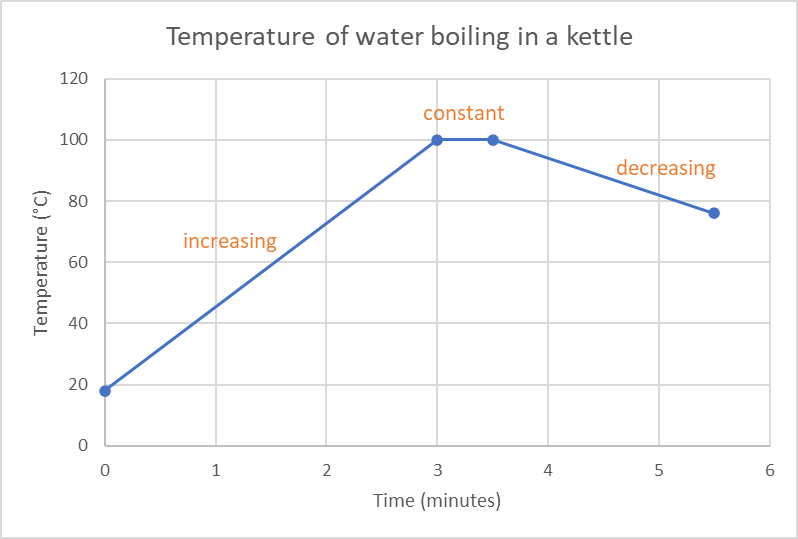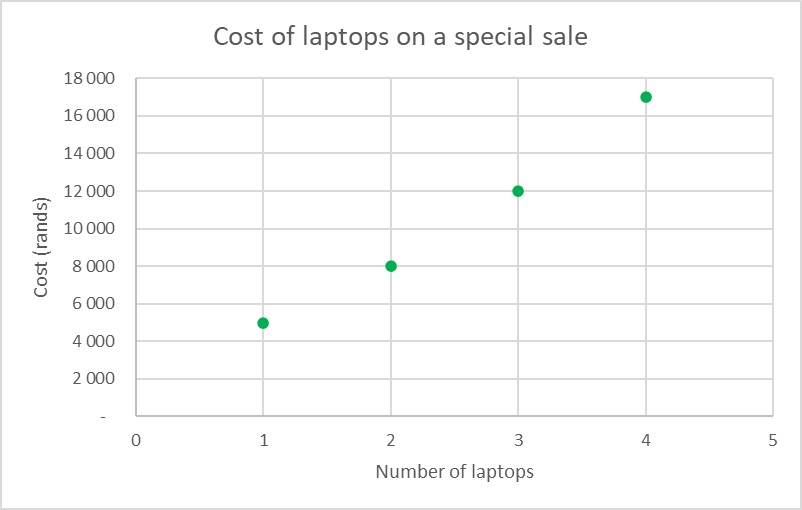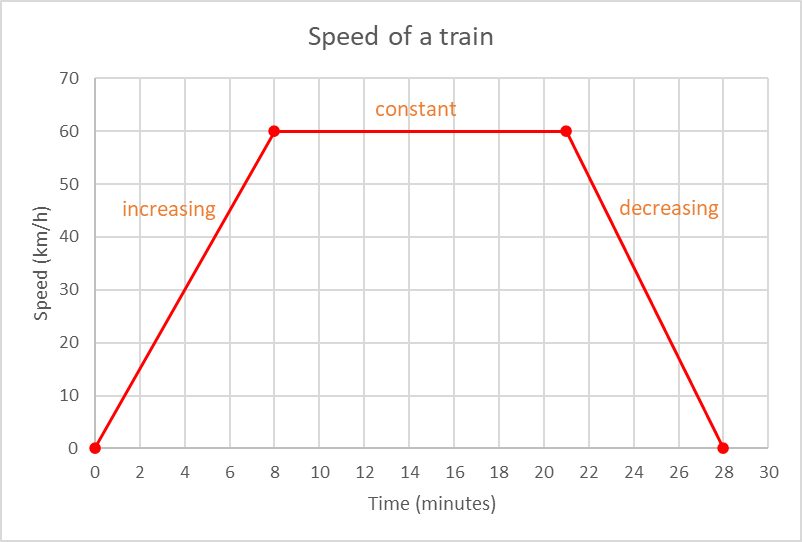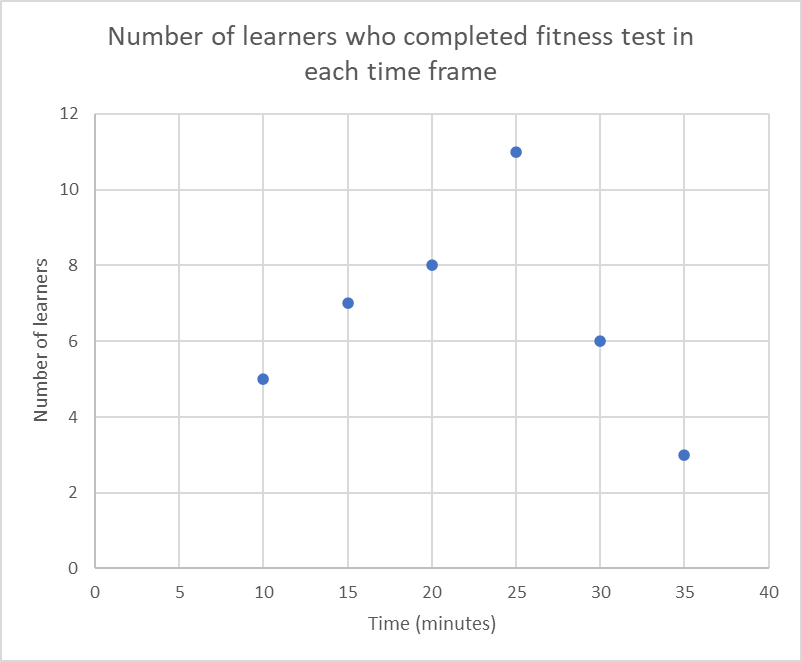The starting temperature of water in a kettle is \(18 ^{ \circ}\text{C}\). When the kettle is turned on, the
temperature increases at a steady rate for 3 minutes until it reaches \(100 ^{ \circ}\text{C}\). It boils for
30 seconds and then switches off. After 2 minutes, the temperature of the water in the kettle has cooled to
\(76^{ \circ}\text{C}\).
- Is the data in this situation discrete or continuous?
- Use the information provided to draw a suitable graph.
- Indicate on your graph the sections where the graph is increasing, decreasing and constant.
- Continuous
- and 3.

A computer shop is offering a special deal on laptops: One laptop costs \(\text{R}\,\text{5 000}\), 2 laptops cost \(\text{R}\,\text{8 000}\), three
laptops cost \(\text{R}\,\text{12 000}\) and four laptops cost \(\text{R}\,\text{17 000}\).
Use the information provided to answer the questions.
- Is the data in this situation discrete or continuous?
- Use the information provided to draw a suitable graph.
- Before the sale started, Maggie bought four laptops at \(\text{R}\,\text{6 500}\) each. How much would she have saved if she
bought the laptops during the sale?
- Discrete

- \(4 \times \text{R}\,\text{6 500} = \text{R}\,\text{26 000}\)
On sale, four laptops cost \(\text{R}\,\text{17 000}\)
\(\text{R}\,\text{26 000} - \text{R}\,\text{17 000} = \text{R}\,\text{9 000}\)
A train leaves the station and increases its speed at a constant rate for 8 minutes until it reaches \(60
\text{ km}{\cdot}\text{h}^{-1}\). The train travels at a constant speed of \(60 \text{
km}{\cdot}\text{h}^{-1}\) for 13 minutes and then reduces its speed at a steady rate. It takes the train 7
minutes to come to a complete stop at the next station.
- Is the data in this situation discrete or continuous?
- Use the information provided to draw a suitable graph.
- On your graph, indicate the sections where the graph is increasing, decreasing and constant.
- Continuous
- and 3.





